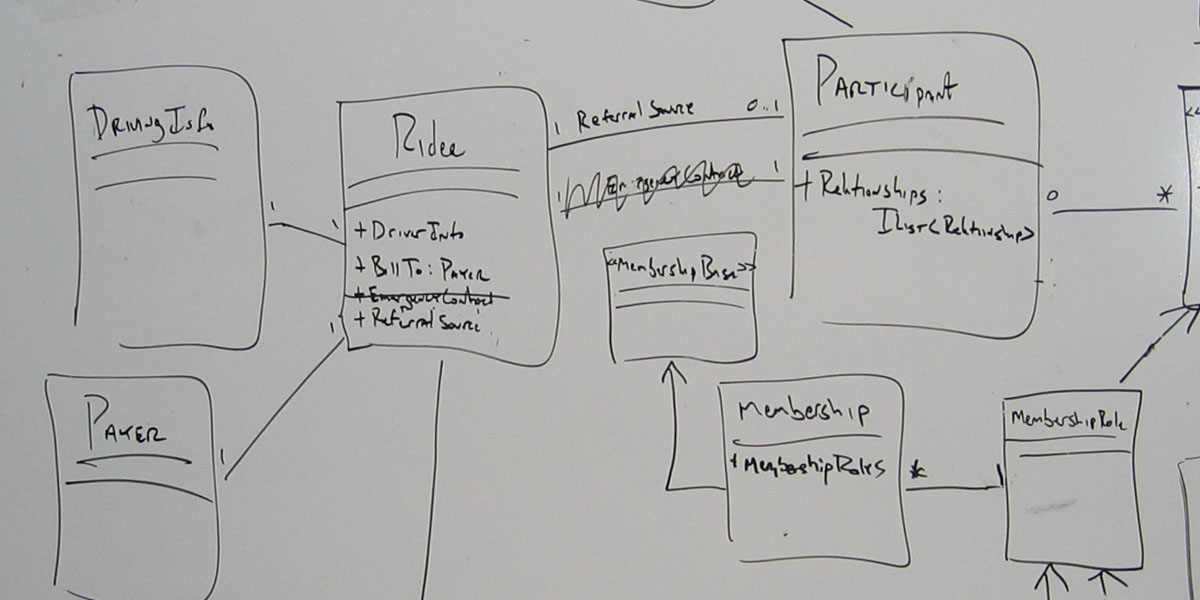-
VSLive SF 2015: ‘Better Unit Tests Through Design Patterns’ Slides & Code

As promised, here are the slides from the Better Unit Tests through Design Patterns: Repository, Adapter, Mocks, and more… talk that I did yesterday at VSLive San Francisco 2015. Here’s the abstract: You’re sold on unit testing. You’re even doing “test first” development – but there are always those nagging questions. How do your user interfaces fit into…
-
VSLive SF 2015: Enterprise Git Slides

As promised, here are the slides from the Enterprise Git talk that I did with Ed Thomson yesterday at VSLive San Francisco 2015. Here’s the abstract: Git is all the rage. All the cool kids are using Git. They seem to like it a lot. They’re downright passionate about it. But is it right for your project? It’s…
-
VSLive SF 2015: TFS Automated Build, Test, & Deploy

As promised, here are the slides and code samples from my Automated Build, Test & Deploy with TFS, ASP.NET, and SQL Server talk that I did today at VSLive San Francisco 2015. Here’s the abstract: Automatically building your ASP.NET code is easy. Create a TFS build and go. But what about the database code? How…
-
VSLive SF 2015: Load Testing Slides & Code

As promised, here are the slides and code samples from my Load Testing ASP.NET & WebAPI with Visual Studio 2013 talk that I did today at VSLive San Francisco 2015. Here’s the abstract: It’s a common problem: you’re getting close to when you’re supposed to deploy your new ASP.NET application in to production and somehow…
-
Slides: “Coaching Skills for Scrum Masters & The Self-Organizing Team” from ALM Chicago

I just wrapped up speaking at ALM Chicago 2015. (Had a great time, BTW.) As promised, here are my slides from my talk. Coaching Skills for Scrum Masters & The Self-Organizing Team Scrum works best with — arguably, requires — a self-organizing team. If you want a high-performing and self-organizing team, it helps if your…
-
Zen & the Art of the Scrum Timebox

Everything that happens in Scrum happens within a ‘timebox’. There’s the 30 day (or less) overall Sprint and then there are timeboxes for the events within a Sprint. There’s 8 hours (or less) for the Sprint Planning Meeting. The Daily Scrum gets 15 minutes. Then 4 hours (or less) for the Sprint Review followed by…
-
4 Ways to Fail at Scrum Planning Poker

If you’re doing Scrum, chances are high that you use or at least have heard of Planning Poker. (By my estimates, I’d say that somewhere between 0 and 100% of teams use it.) It’s a simple and effective way to do software estimation that’s easy to understand and implement. Considering how simple it is, you’d…
-
A Quick Guide to Choosing Your Scrum Sprint Length

If your team is using Scrum to organize their work and deliver done, working software, you’ll be working in Sprints. A Sprint is the time you have to do your work. A Scrum Sprint goes like this: 1) at the start of the sprint you plan what you’re going to do and how, 2) go…
-
5 Reasons Your Daily Scrum is Boring

When you ask someone “what’s Scrum?”, probably 9 times out of 10 they’ll start telling you about the Daily Scrum meeting. Maybe they call it the “standup” or the “daily” or the “daily standup” but they’re talking about that meeting that you’re supposed to have every day if you’re doing Scrum. Oh…and they almost invariably say…
-
Automatic Exception Handling on ICommand ViewModel Properties

If you’re writing a WPF application or some other XAML-based application, you’re probably using the Model-View-ViewModel (MVVM) pattern. If you’re being “good” about your MVVM implementation, you’re putting all your button click handling code into ICommand properties on your ViewModels. (What!? You’re not doing that? Naughty naughty! You should! It makes it so much more…
Introducing Slide Speaker: Videos with Voice-over from your PowerPoint and Google Slides Presentations
TOPIC TAGS
.NET Core Agile ALM angular ASP.NET ASP.NET Core Azure App Services Azure DevOps Azure DevOps Pipelines backlog refinement C# Coded UI Continuous Deploy Design Patterns DevOps dotnet EF Core Entity Framework Flow Metrics Git github Leadership Load Tests Microsoft Project Server Microsoft Test Manager (MTM) MVC PowerShell QA Testing Scrum Security SQL SQL Server SSDT Team Build Team Foundation Server (TFS) tfs build TFS Release Management tfs releases Unit Testing / Test-Driven Development (TDD) Visual Studio Visual Studio Code (VSCode) VSTS webapi Windows Azure YAML
SUBSCRIBE TO THE BLOG
